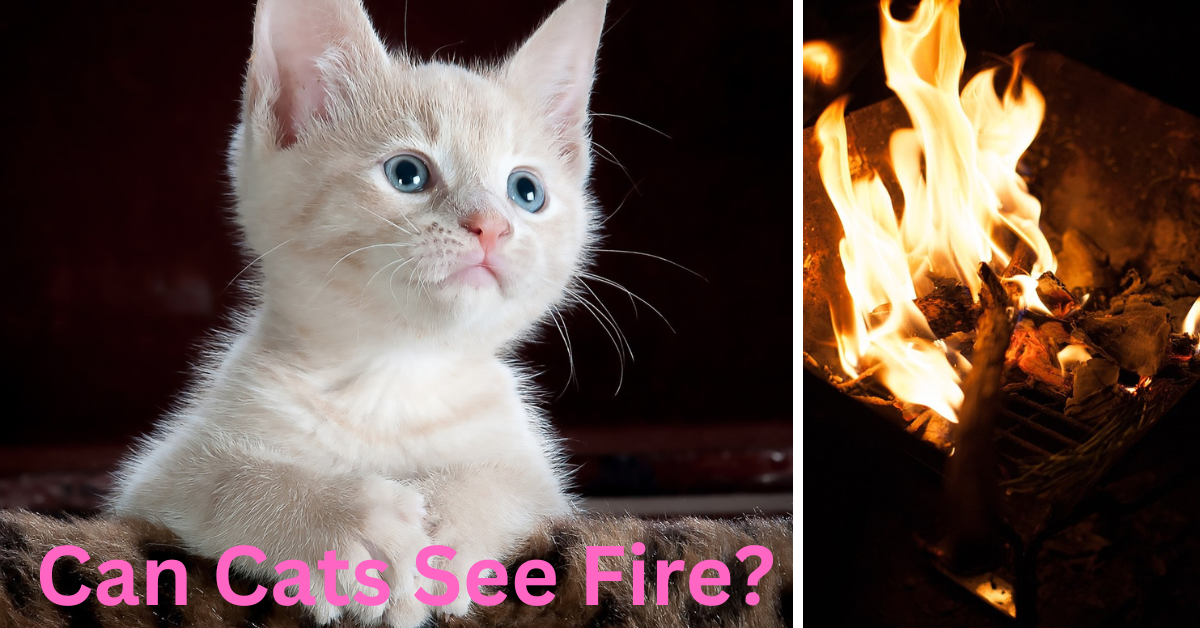Introduction
Greetings, fellow cat enthusiasts! Ever pondered the question: Can cats see fire? In today’s exploration, we’re delving into the captivating realm of feline vision, seeking answers to unravel the mysteries surrounding whether our beloved feline friends can truly perceive fire.
Join us on this enthralling journey as we delve into the intriguing world of our furry companions’ eyesight!
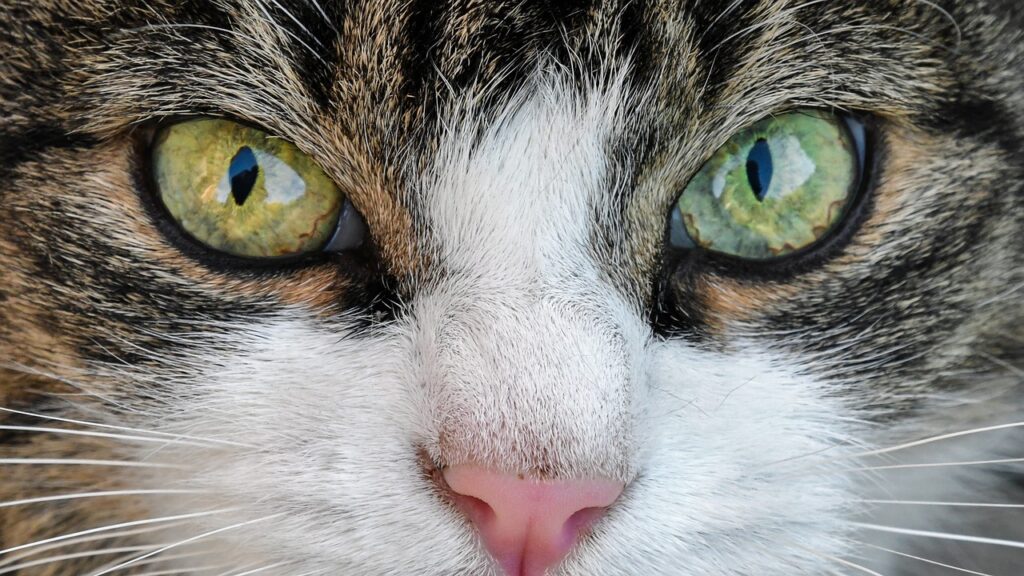
Can Cats See Fire?
Have you ever wondered, “Can cats see fire?” This intriguing question delves into the mysteries of feline perception. Some may ponder, “Can cats see fire?” when flames dance before their eyes. The enigma lies in understanding the intricacies of our feline companions’ vision.
Can cats see fire in the flickering glow, or is it a mere play of shadows for them? Join us in exploring the fascinating world of feline sight, as we seek to unravel the mysteries behind the captivating question: Can cats see fire?
Exceptional Eyesight:
The feline visual prowess is nothing short of extraordinary. Cat eyes are finely tuned to facilitate superior vision, particularly in low-light scenarios, enabling them to discern subtle movements with ease. In environments with diminished illumination, like dusk or dark rooms, cats can perceive fire more distinctly.
Nocturnal Predators:
Renowned for their prowess as hunters, cats owe a significant part of their success to their eyes. Sporting expansive pupils that can widen to admit more light, these nocturnal creatures excel in low-light conditions, a trait instrumental in their hunting endeavors.
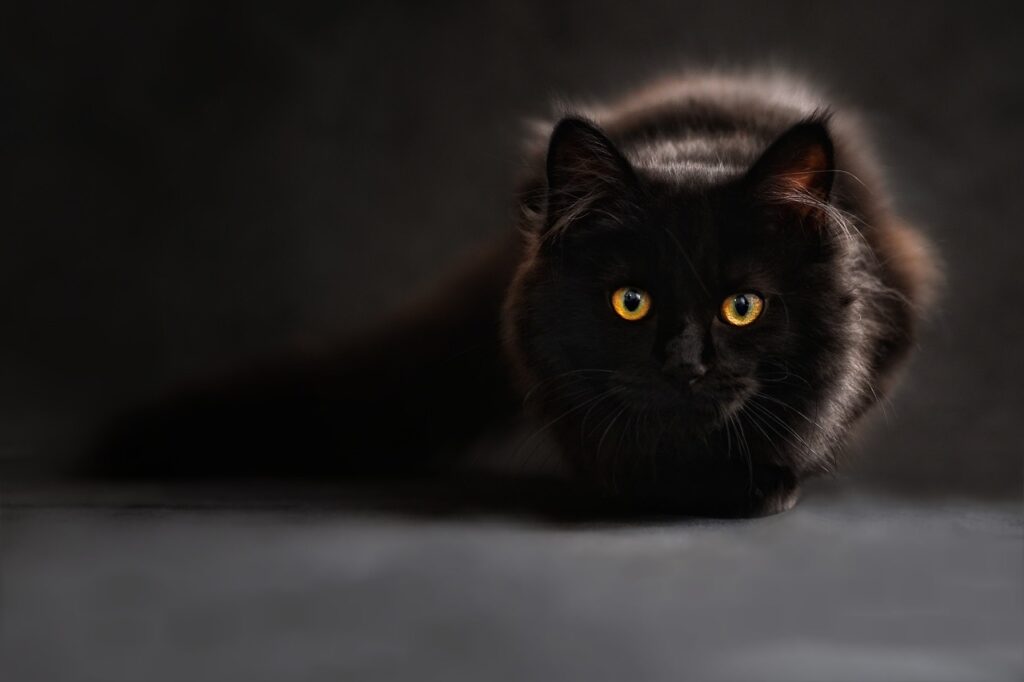
3. Tapetum Lucidum:
A key feature in a cat’s eyes is the tapetum lucidum, a reflective layer that enhances their night vision. This layer reflects light through their retinas, providing a second opportunity for visual perception. This phenomenon is why their eyes may gleam in the dark, contributing to their heightened ability to navigate low-light environments.
4. Better motion detection:
Cats excel in motion detection, thanks to specialized cells in their eyes that are highly sensitive to movement. This unique adaptation enables them to swiftly identify and track fast-moving prey or promptly detect any sudden changes in their surroundings.
Related Posts :
Let’s Understand Top 15: Cat Sleeping Above My Head Meaning Spiritual
Let’s Understand Do Cats Get Horny? TOP 10 FACTS
Let’s Understand Why is Your Cat Peeing on the Stove? 6 Reasons
Let’s Understand Why Are Orange Cats So Dumb? 10 Facts and Myths
Can Cats Really See Fire?
Yes, cats can see fire.
Indeed, cats can see fire. Scientific findings suggest that while cats can perceive the light emitted by fire, their visual experience of the actual flames may differ from ours. Cats’ eyes excel in detecting movement, and they tend to focus more on nearby objects or those within their reach.
Consequently, when observing distant phenomena like flickering flames from afar, they may not discern all the intricate details as vividly as humans do.
Cats are instinctively drawn to bright lights and motion, which encompasses the captivating allure of fire. It’s not uncommon to witness feline fascination as they keenly observe or playfully paw at the air near a mesmerizing fire.
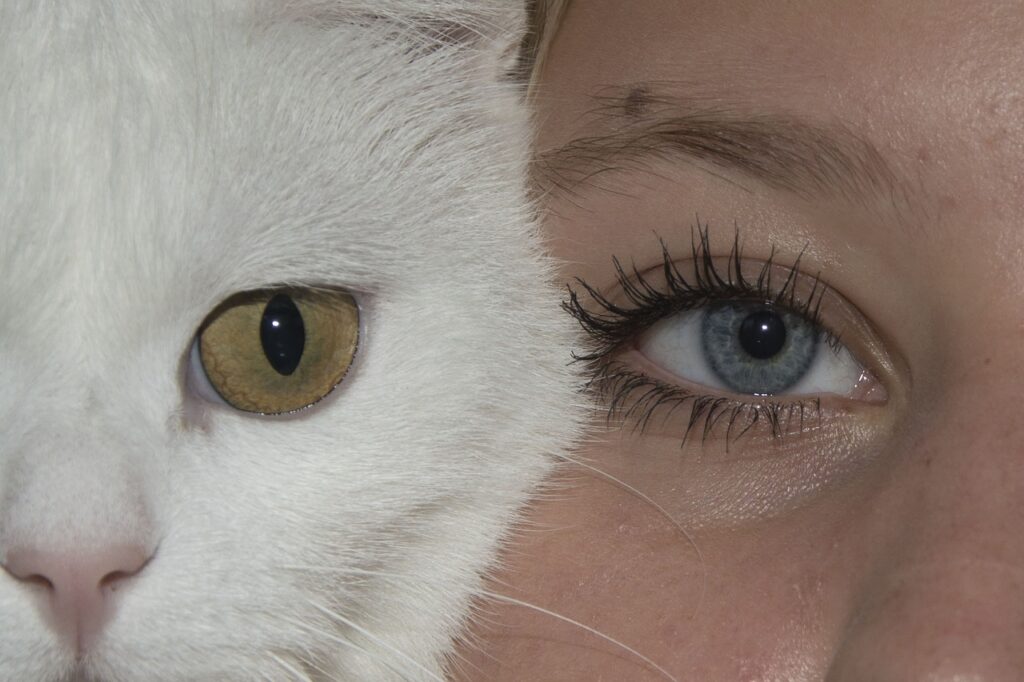
Cats’ Perception of Light and Color:
When it comes to perceiving light and color, cats see the world in a different way than humans. While humans can see a wide range of colors, cats have a more limited color spectrum.
While we see a whole rainbow of colors, cats see fewer colors. They mainly see shades of blue and green, but they might have trouble seeing reds and oranges.
Their vision is more attuned to detecting movement and contrast, making them excellent hunters, especially in low-light conditions.
Cats’ Perception of Light and Color:
In the realm of light and color perception, cats distinctly navigate the world compared to humans. While the human eye embraces a broad spectrum of colors, feline vision is more constrained.
In contrast to our perception of a vibrant rainbow, cats experience a more limited color spectrum. Their visual world predominantly consists of shades of blue and green, with potential challenges in distinguishing reds and oranges.
However, where cats excel is in their heightened sensitivity to movement and contrast. This unique visual adaptation makes them exceptional hunters, particularly in environments with reduced light, showcasing their prowess in navigating the world through a different palette of colors and contrasts.
Related Posts :
Let’s Understand Top 15: Cat Sleeping Above My Head Meaning Spiritual
Let’s Understand Do Cats Get Horny? TOP 10 FACTS
Let’s Understand Why is Your Cat Peeing on the Stove? 6 Reasons
Let’s Understand Why Are Orange Cats So Dumb? 10 Facts and Myths
Cats’ Reaction to Fire:
Examining cats’ behavior around the fire can offer insights into their perception of this captivating element.
1. Fear and caution:
Cats are inherently cautious creatures, and in the presence of fire, they may exhibit fear. The luminous flames and crackling sounds can potentially startle them, creating an environment where they feel unsafe.
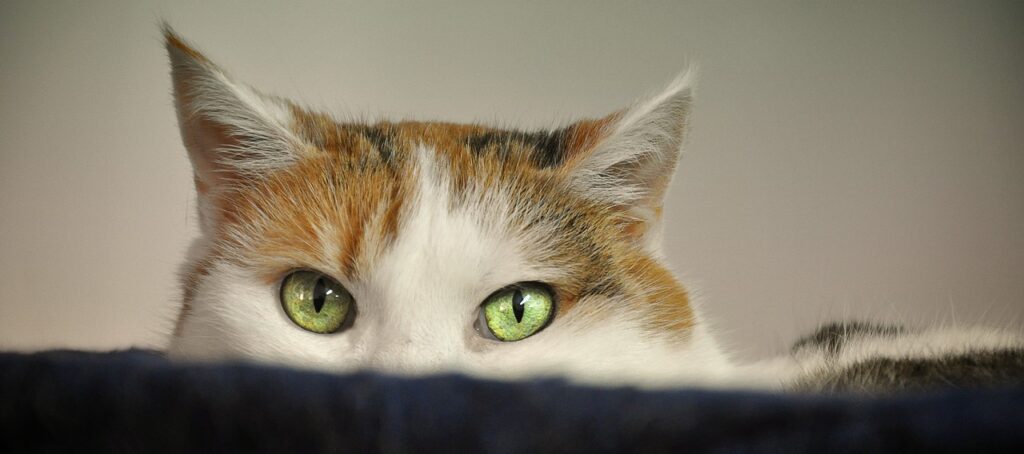
2. Keeping a safe distance:
In addition to their cautious nature, cats can also harbor a sense of curiosity and fascination towards fire. From a safe distance, they may observe the flames, their eyes aglow with interest, attempting to comprehend this captivating phenomenon.
4. Sensing the heat:
Equipped with sensitive skin and fur, cats can discern the warmth emanating from a fire. While this can provide comfort, especially during winter, owners should ensure that their feline companions don’t venture too close, preventing any risk of burns.
5. Protective instincts:
Cats, driven by their protective instincts, may feel compelled to safeguard their territory and loved ones from the potential threat of fire. Signs of concern, such as meowing or pacing, might manifest as they endeavor to alert their human companions to the perceived danger.
6. Seeking Comfort:
Similar to humans, cats seek comfort in times of uncertainty or peril. When they sense the presence of fire or its smoke, they may retreat to a secure spot within the house or seek the companionship of their owners, seeking reassurance amidst potential danger.
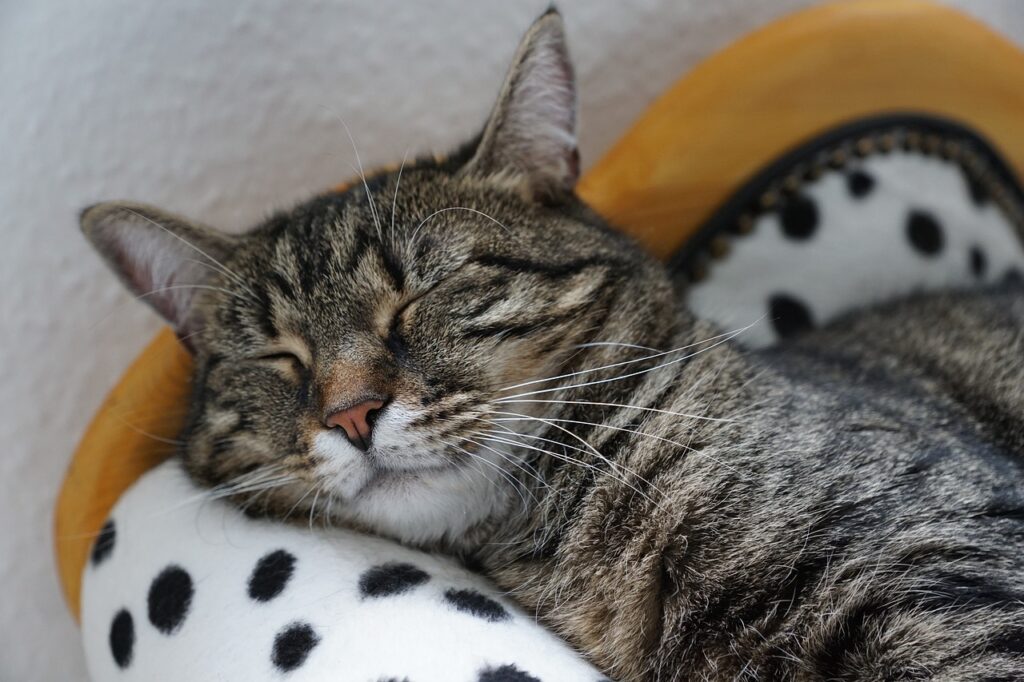
7. The Role of Scent:
Leveraging their keen sense of smell, cats can effectively detect the distinct scents of smoke and burning associated with fire. This heightened olfactory awareness further contributes to their vigilance and caution in the presence of fire.
8. Responding to Alarms:
In residences equipped with smoke detectors that emit loud sounds in response to smoke or fire, cats may exhibit signs of stress or seek refuge until the noise diminishes.
It’s crucial to prioritize safety by ensuring that cats are kept at a safe distance from the fire, employing screens or barriers around fireplaces, and placing candles or open flames out of their reach to prevent any potential accidents or injuries.

Related Posts :
Let’s Understand Top 15: Cat Sleeping Above My Head Meaning Spiritual
Let’s Understand Do Cats Get Horny? TOP 10 FACTS
Let’s Understand Why is Your Cat Peeing on the Stove? 6 Reasons
Let’s Understand Why Are Orange Cats So Dumb? 10 Facts and Myths
Do Cats Understand the Dangers of Fire?
While cats may not grasp the intricacies of fire in the way humans do, their instinct for self-preservation guides their behavior. Cats, attuned to sensing heat, can feel the warmth radiating from flames, allowing them to instinctively avoid direct danger.
Additionally, their keen senses, including a heightened sense of smell, enable them to detect the presence of smoke and burning materials associated with fire. The cautious demeanor exhibited by cats around flames indicates an inherent understanding of the potential danger posed by fire.
Responsible pet owners play a crucial role in fostering a safe environment by implementing barriers, keeping flames out of reach, and minimizing potential fire hazards.
Cats and Fire Safety:
1. Keeping cats away from fire:
This entails ensuring that cats do not venture too close to elements such as open flames, candles, or fireplaces. Careful attention is essential to guarantee that our furry companions maintain a safe distance from these heat sources and potential fire hazards, safeguarding them from harm.

2. Utilizing Protective Barriers:
Ensuring cat safety involves the implementation of protective barriers, such as screens or gates, around fireplaces or heaters. These barriers serve as a preventive measure to discourage cats from inadvertently getting too close to the fire.
3. Keeping Candles Out of Reach:
Given cats’ innate curiosity, they may be inclined to play with candles, posing a potential hazard. To avert accidents, it is advisable to position candles in areas inaccessible to cats, minimizing the risk of them being reached or knocked over.
4. Securing Wires and Cords:
Cats may be drawn to the movement of wires or cords connected to electrical devices. To mitigate the risk of accidental pulling and potential fire hazards, it’s crucial to secure these wires, preventing cats from interacting with them.
5. Storing Flammable Materials Safely:
To maintain a secure environment, flammable materials such as lighters, matches, or lighter fluid should be stored in cabinets or drawers that are inaccessible to cats. These items pose dangers if cats chew on them or accidentally knock them over.
Related Posts :
Let’s Understand Top 15: Cat Sleeping Above My Head Meaning Spiritual
Let’s Understand Do Cats Get Horny? TOP 10 FACTS
Let’s Understand Why is Your Cat Peeing on the Stove? 6 Reasons
Let’s Understand Why Are Orange Cats So Dumb? 10 Facts and Myths
6. Monitoring Stove Usage:
Cats, known for their curiosity and climbing tendencies, may be tempted to explore stovetops. During cooking, it is imperative to either keep cats out of the kitchen or utilize stove guards to prevent inadvertent burns or fire incidents.

7. Fire Safety Equipment:
Ensuring the safety of everyone in your home, including your cat, involves having operational smoke detectors and fire extinguishers. Regularly checking the functionality of these devices and replacing batteries as needed is crucial.
8. Preparing an Emergency Plan:
In the event of a fire, having a well-thought-out emergency plan for both you and your cat is essential. Ensure there’s a designated carrier, emergency supplies, and a predetermined safe location outside the home.
9. Regular Vet Check-ups:
Prioritizing regular visits to the veterinarian is crucial for maintaining your cat’s overall health. During these check-ups, discussions about fire safety concerns and specific precautions necessary for your cat can be addressed.
Conclusion: Can Cats See Fire ?
In conclusion, while cats may not perceive fire in the same way as humans, their unique visual abilities enable them to sense its presence through other senses. Their sensitivity to heat and instinctual responses to fire-related dangers are fundamental for their well-being.
As responsible pet owners, it is imperative to guarantee their safety by implementing proper fire safety measures in our homes. The importance of these measures cannot be overstated, underscoring the need for vigilance in safeguarding our feline companions from potential fire hazards.
Can cats see fire? While their perception may differ, their instinctive responses and safety considerations are paramount.
Frequently Asked Questions:
Can Cats Get Too Close to the Fire?
Yes, cats can get too close to the fire. Cats are naturally curious creatures, and their curiosity or desire for warmth may lead them to approach a fire.
What Should I Do If My Cat Accidentally Gets Too Close to a Fire?
If your cat gets too close to a fire, act promptly to prevent harm. Stay calm and gently guide your cat away from the fire using a safe object like a towel or broom. Ensure their paws or fur have not touched the flames, and closely monitor for any signs of injury.
Are There Specific Fire Hazards Related to Cats?
Indeed, some fire hazards are specific to cats, such as knocking over candles, playing with electrical cords, or jumping on stovetops.
Can Cats Sense Danger of Fire Before Humans?
Cats, with their highly sensitive senses, may detect the smell of smoke or hear fire-related sounds before humans do.
How Can I Protect My Cat from Fire Hazards?
To safeguard your cat from fire hazards, take precautions like keeping flames out of reach, securing electrical cords, and ensuring they are not accessible for chewing.
Signs of Cats Being Aware of Fire?
Cats may display signs of unease or anxiety when aware of fire, including hiding, pacing, vocalizing, or attempting to alert owners through persistent meowing or unusual behavior.
Can Cats Be Trained to Stay Away from Flames?
Yes, using positive reinforcement, cats can be trained to avoid fireplaces or open flames by associating these areas with negative experiences like loud noises or unpleasant smells.
Alternative Ways to Provide Warmth for Cats Without Open Flames?
Certainly! Safer alternatives include using pet-safe heating pads or blankets designed for cats. Ensure these items are in good condition and adhere to the manufacturer’s safe-use instructions.

